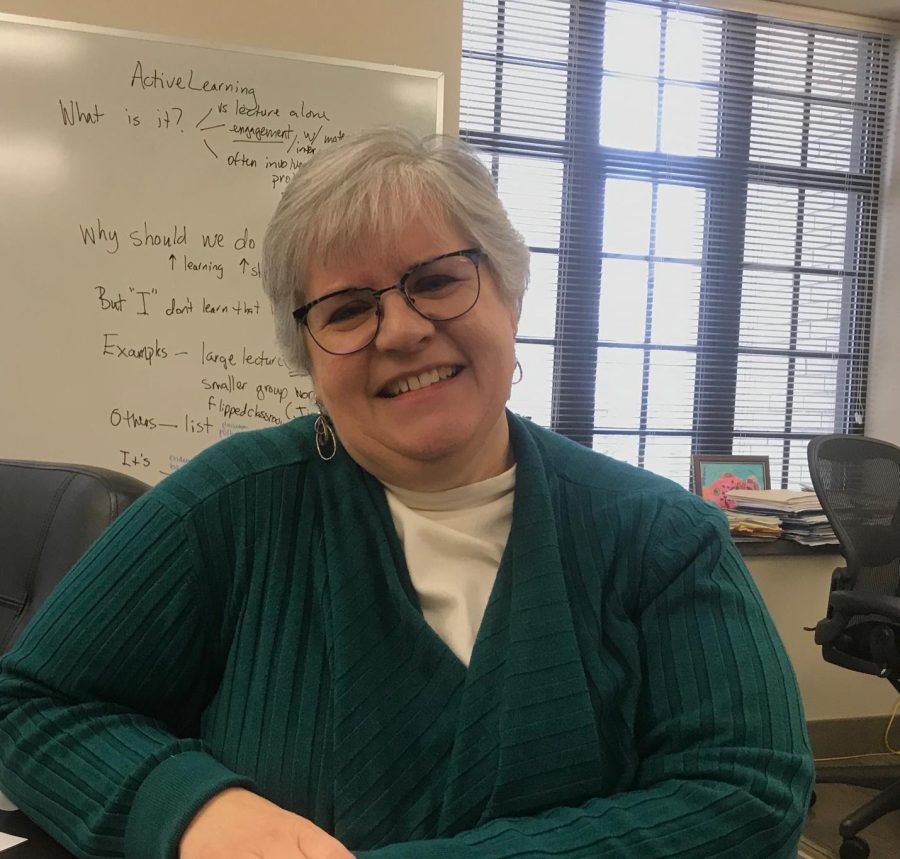Campus organization fosters improvement of classroom dynamic
Jennifer Marcinkiewicz, director of The Center for Teaching and Learning, in her office, 220D Cartwright Hall.
January 26, 2020
Students identifying characteristics of good and bad professors has resulted in Kent State providing faculty members with resources to create a better learning environment.
The Center for Teaching and Learning began in the fall of 1998 as the Faculty Professional Development Center. In June 2013, then Provost Todd Diacon requested the clarification of the center’s mission to what it stands for today.
Professors seek guidance through individual consultation and events provided by the center.
Jennifer Marcinkiewicz, director of the Center for Teaching and Learning, said the center tries to sponsor around six to 10 events during each of the fall and spring semesters.
“Last year we reached approximately 600 faculty at our events,” Marcinkiewicz said. “This year it should be much greater.”
The center has a series called Working Lunches where faculty learn teaching strategies through interactive sessions. Many special events are partnerships with other services on campus.
“We’re trying to help give faculty concrete tools, approaches and skills to be able to make student learning experiences meaningful,” she said.
The center also consults with faculty on how to fix problems within the classroom.
“When the student perspective is not taken into account … it may not translate well for students,” she said.
Good communication with professors holds importance in the classroom, said freshman fashion merchandising major Matthew Clark.
Blackboard Learn being left in template mode creates a problem and is a sign a professor is not relating to the students, Clark said.
Marcinkiewicz said she has advised many faculty members on how to use Blackboard Learn and other resources more effectively. She has suggested posting objectives of what students should be learning in class on the classroom board, PowerPoint or Blackboard Learn.
“Those sorts of things really show students what’s the most important thing they should know,” she said. “They start to attach everything that’s happening in class to those particular objectives or questions and it really helps to prepare the mind for learning.”
Another factor that can negatively impact students is lack of a response to emails, Clark said.
Marcinkiewicz encourages faculty to discuss expectations with students as far as emails and communication.
“Having that clarity and some mutual understanding I think is really essential,” she said. “A lot of us value our privacy, but at the same time we need to be human with our students.”
The center also recognizes a need for relationships with and between students to create a productive learning environment.
“[Good professors] explain things well,” sophomore visual communication design major Amanda Bocock said. “They don’t just give you a paper and expect you to do it.”
Kent State is focusing on being ready for students with all kinds of educational backgrounds.
“It’s always been important for faculty to be able to explain things very clearly,” Marcinkiewicz said. “If they have a faculty member who is not only knowledgeable, but really passionate about what they’re teaching, it can help students connect their own interests to that subject.”
Although some teaching techniques may not work for all students, Marcinkiewicz said she is energized by the commitment of faculty.
“They want to be good teachers,” she said. “All faculty are really, really concerned about doing a good job.
Contact Anna Smith at [email protected].

























